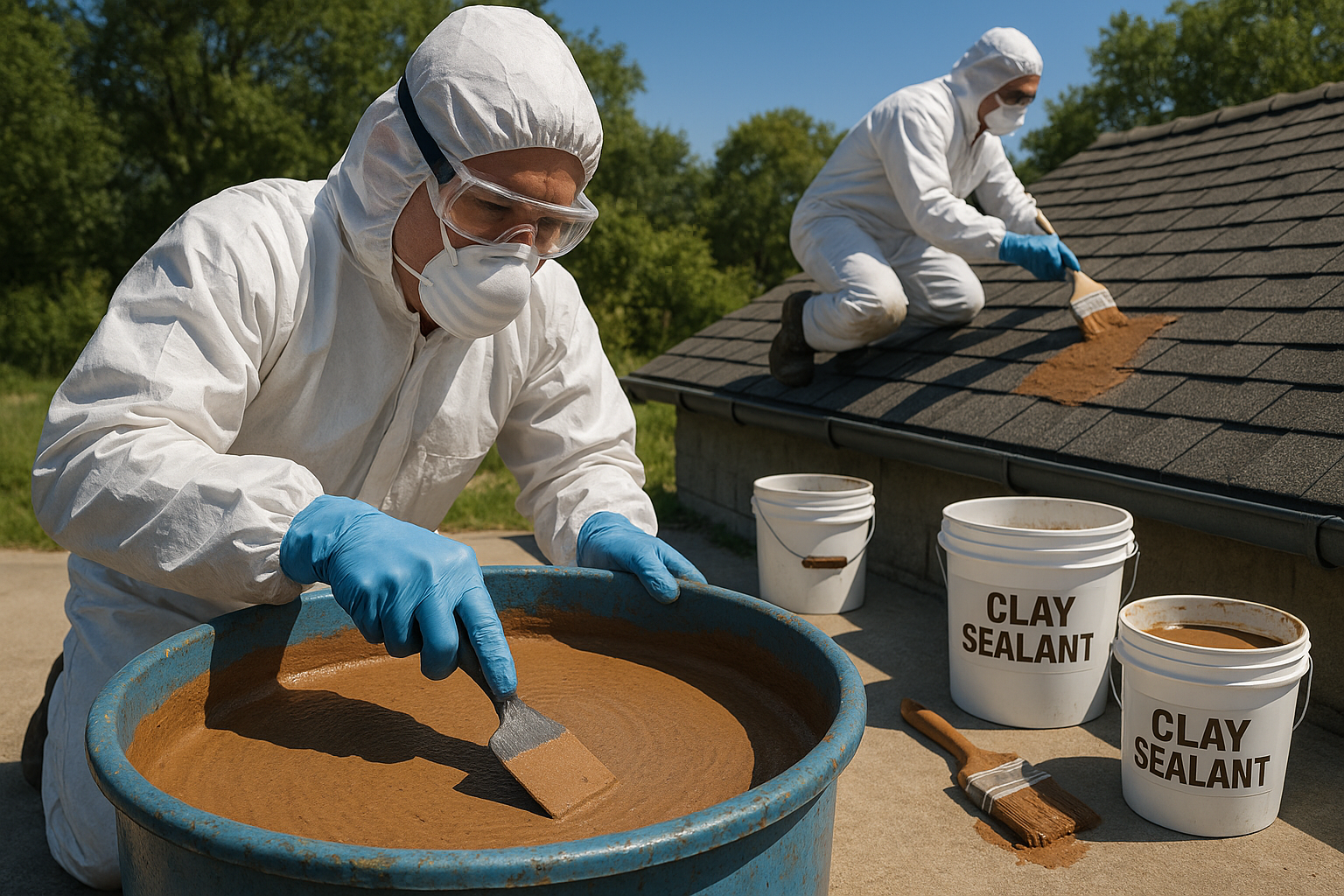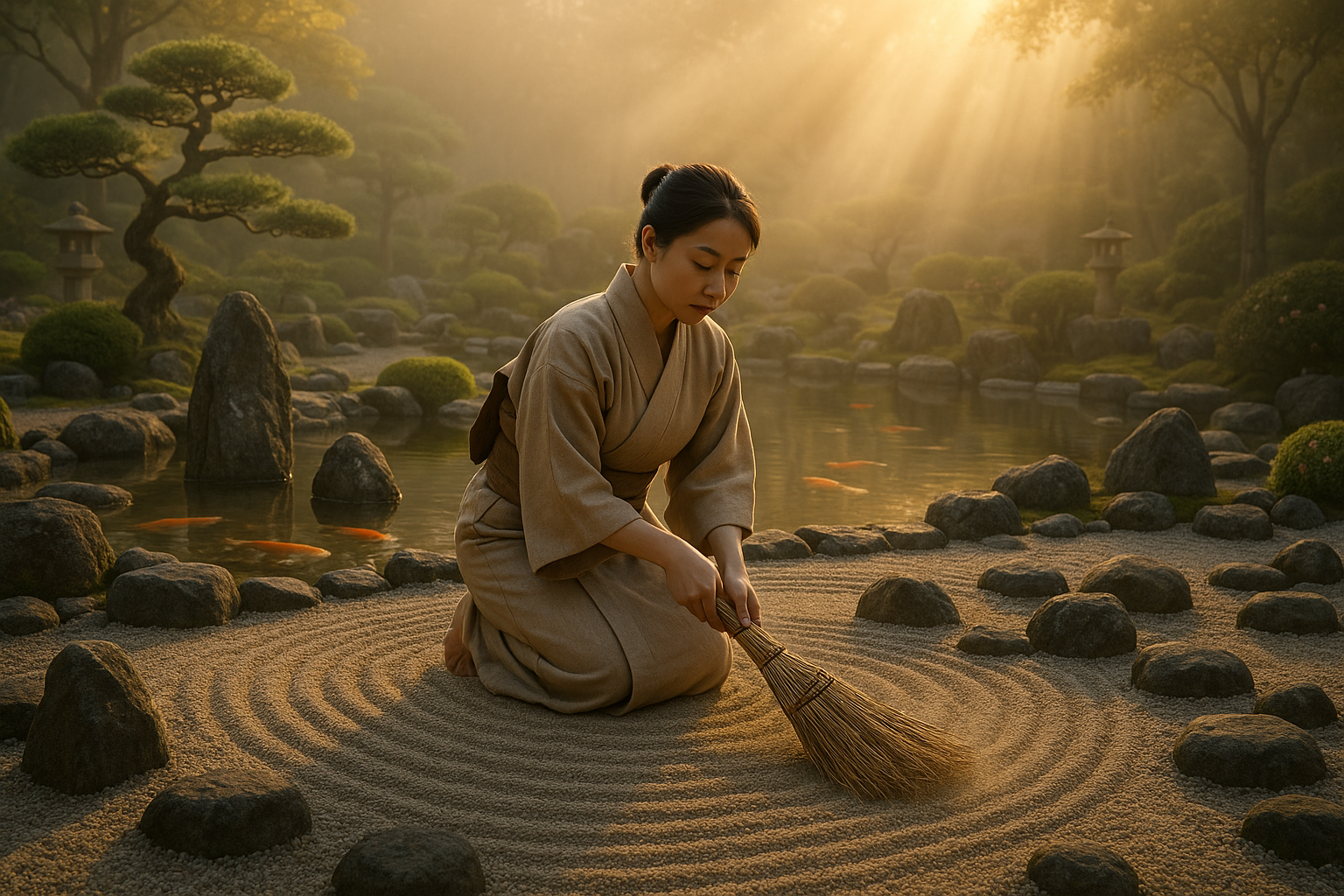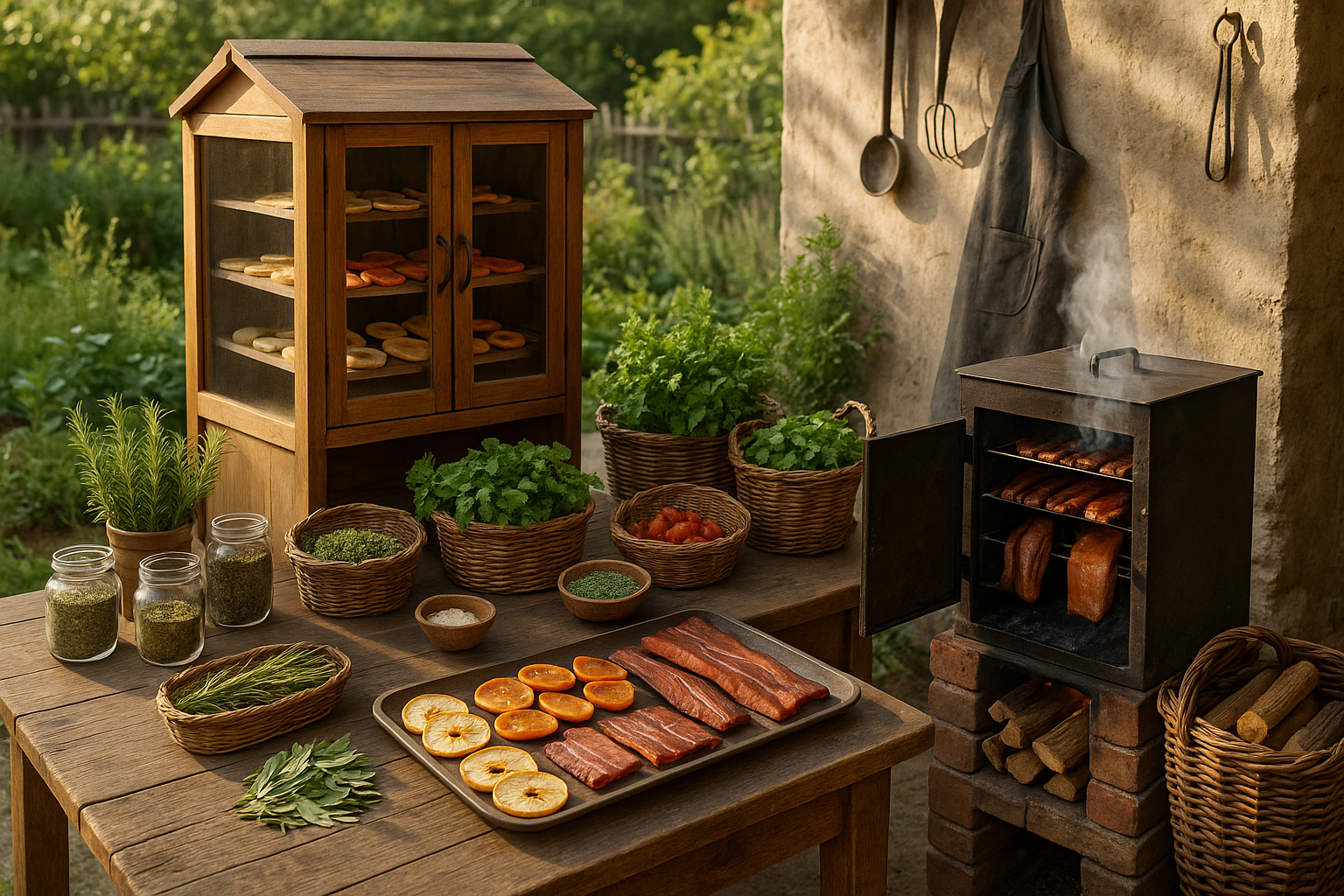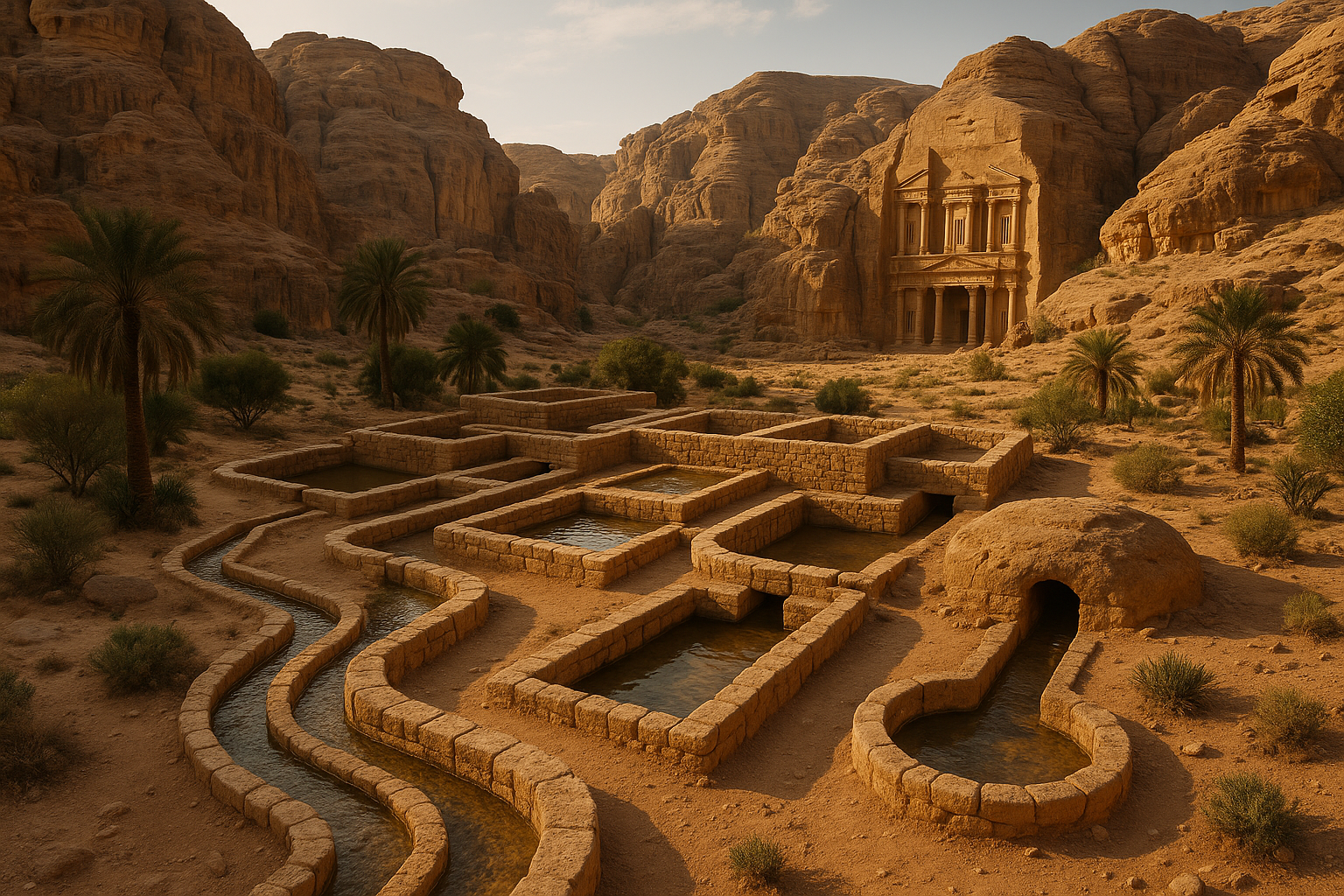In a world where modern conveniences often overshadow the allure of ancient practices, there lies a hidden gem in the rich tapestry of human history: the art of Pre-Columbian chocolate frothing. Imagine stepping back in time to an era where chocolate was not just a sweet treat, but a revered and ritualistic beverage, meticulously frothed and savored by the elite and the divine. This is a story of discovery, a journey into the heart of Mesoamerican civilization where chocolate was transformed into something far beyond a mere drink—an experience, a ceremony, and a testament to the ingenuity of ancient cultures.
As you embark on this delicious dive into the past, you’ll uncover the fascinating origins of chocolate frothing, tracing back to the Olmecs, Mayans, and Aztecs. These civilizations viewed chocolate as a sacred elixir, often associated with gods and used in significant ceremonies. The process of frothing chocolate was not only a culinary technique but a ritualistic act that infused the beverage with air, elevating its texture and taste. The rhythmic pouring of chocolate from one vessel to another, creating a luscious foam, was a sight to behold and a skill passed down through generations. In this exploration, we’ll unravel the methods used by these ancient artisans and how they mastered the art of frothing to create a drink that was both invigorating and spiritually enriching.
Delving deeper, we’ll examine the cultural and social significance of chocolate in Pre-Columbian societies. Beyond its delightful flavor, chocolate was a symbol of status and wealth, often used in trade and as a currency. It played a pivotal role in social gatherings and religious rituals, serving as a bridge between the earthly and the divine. You’ll discover how this humble bean became a cornerstone of Mesoamerican culture, influencing everything from politics to daily life. The meticulous preparation of frothed chocolate was a reflection of the values and beliefs of the time, emphasizing community, spirituality, and a profound appreciation for the natural world.
Finally, we will connect the ancient art of chocolate frothing to the present day, exploring how these age-old techniques can be revived and appreciated in our modern kitchens. By embracing the traditional methods of our ancestors, we can enrich our culinary experiences and gain a deeper understanding of the cultural heritage embedded in every frothy cup. From the tools used to the ceremonial aspects of chocolate preparation, this article will serve as both a historical exploration and a practical guide. So, ready your taste buds and open your mind to the wonders of the past, for this journey through the ages promises to be as enlightening as it is delectable. 🍫
The Cultural Significance of Pre-Columbian Chocolate
Chocolate, a beloved treat today, has its origins deeply rooted in the ancient cultures of Mesoamerica. The Mayans and Aztecs revered chocolate, not merely as a delicious indulgence but as a sacred commodity. It was often consumed in the form of a frothy beverage, a practice steeped in ritual and tradition. The art of chocolate frothing was not just culinary but also spiritual, reflecting the intricate relationship these civilizations had with cacao.
For the Mayans, cacao was a gift from the gods, and its frothy beverage was consumed during important rituals and ceremonies. The process of frothing chocolate was an elaborate affair, often involving multiple steps to ensure the perfect consistency and flavor. This drink was typically reserved for the elite and for special occasions, highlighting its significance in Mayan society. Similarly, the Aztecs valued cacao highly, using it as currency and in religious rituals. The frothing technique was essential to creating the thick, rich texture they desired, achieved by pouring the liquid back and forth between two vessels.
As you delve into the ancient art of chocolate frothing, consider how these practices influenced modern culinary techniques and our understanding of chocolate today. The cultural significance of pre-Columbian chocolate extends beyond its taste, offering insights into the values and traditions of these ancient societies. To gain a deeper understanding of this historical context, watch this insightful video on the role of cacao in Mesoamerican culture.
Methods and Techniques of Chocolate Frothing
The ancient techniques of chocolate frothing were both an art and a science, involving meticulous processes to achieve the desired frothy texture. The Mayans and Aztecs used specific tools and methods to froth their chocolate drinks, which were not only functional but also held cultural significance. One of the key tools in this process was the molinillo, a wooden whisk-like instrument that is still used today in some regions of Mexico.
The technique involved heating the chocolate beverage, then vigorously whisking it with the molinillo until a thick layer of foam formed. This foam was considered the most desirable part of the drink, often used as a topping or mixed back into the beverage to enhance its richness. The frothing process was a communal activity, with participants taking turns to achieve the perfect froth, emphasizing the social aspect of chocolate consumption.
The methods of frothing chocolate have evolved over time, influenced by cultural exchanges and advancements in technology. However, the fundamental principles remain unchanged, reflecting the enduring legacy of these ancient practices. To explore different frothing techniques, consider experimenting with a molinillo yourself or check out this instructional video that demonstrates the process in action.
Comparative Analysis: Ancient vs. Modern Chocolate Frothing Techniques
| Aspect | Ancient Techniques | Modern Techniques |
|---|---|---|
| Tools Used | Molinillo, traditional vessels | Electric whisks, blenders |
| Process | Manual whisking, communal activity | Automated, individual process |
| Cultural Significance | Ritualistic, communal | Primarily culinary |
| Texture and Flavor | Thick, rich, and frothy | Varies, often lighter and smoother |
As seen in the table above, while modern techniques offer convenience, the ancient methods provide a deeper connection to cultural traditions and communal experiences. Consider incorporating some traditional methods into your own chocolate-making practices to appreciate the rich history behind this beloved indulgence.
The Ritualistic Aspects of Chocolate Consumption
In ancient Mesoamerican societies, chocolate was not just a food or drink; it was a medium of ritual and spiritual expression. The consumption of chocolate was intricately tied to religious ceremonies and social gatherings, making it a central aspect of cultural identity. This reverence for chocolate is evident in the way it was prepared and consumed, with each step of the process carrying symbolic meaning.
The rituals surrounding chocolate consumption often involved offerings to deities, highlighting the spiritual importance of cacao. It was common for chocolate to be used in ceremonies such as weddings, funerals, and even in diplomatic exchanges. These rituals were designed to honor the gods, strengthen community bonds, and symbolize prosperity and abundance. The act of frothing chocolate itself was ritualistic, often accompanied by chants or prayers to invoke blessings.
Today, while chocolate is widely accessible and enjoyed globally, understanding its ritualistic roots provides a richer appreciation for its cultural heritage. By recognizing the symbolic importance of chocolate in ancient societies, we can gain insights into their values and beliefs. If you’re interested in learning more about the spiritual aspects of chocolate consumption, I recommend watching this fascinating documentary on the spiritual rituals of chocolate in Mesoamerica.
- Explore traditional chocolate recipes that incorporate ancient frothing techniques.
- Engage with cultural studies on the historical significance of cacao in pre-Columbian societies.
- Participate in workshops or events that celebrate the art of chocolate making and its heritage.
Modern Adaptations and Their Cultural Resonance
In contemporary society, the art of chocolate frothing has seen a resurgence in interest, particularly among culinary enthusiasts and historians. Modern adaptations of ancient techniques aim to preserve the cultural essence of chocolate while embracing new innovations. This intersection of tradition and modernity allows for a unique exploration of flavors and textures, bridging the gap between past and present.
Chefs and chocolatiers today are increasingly inspired by the rich history of chocolate, seeking to recreate the authentic experiences of ancient Mesoamerican cultures. This includes the use of traditional ingredients and methods, such as stone-ground cacao and manual frothing techniques, to achieve the distinct flavors of the past. By incorporating these elements into modern culinary practices, they are able to offer a taste of history, allowing consumers to connect with the cultural narratives of chocolate.
Furthermore, the revival of traditional chocolate frothing techniques has sparked interest in sustainable and ethical cacao sourcing. Understanding the historical importance of cacao encourages a more mindful approach to its production and consumption, promoting fair trade practices and environmental stewardship. As you explore modern adaptations of ancient chocolate frothing, consider how these practices contribute to a more sustainable and culturally resonant culinary experience.
To see how chefs are integrating these ancient techniques into their modern creations, take a look at this inspiring video from a renowned chocolatier who specializes in traditional chocolate recipes. Watch the video here and discover how the past continues to influence the present in delightful and innovative ways.
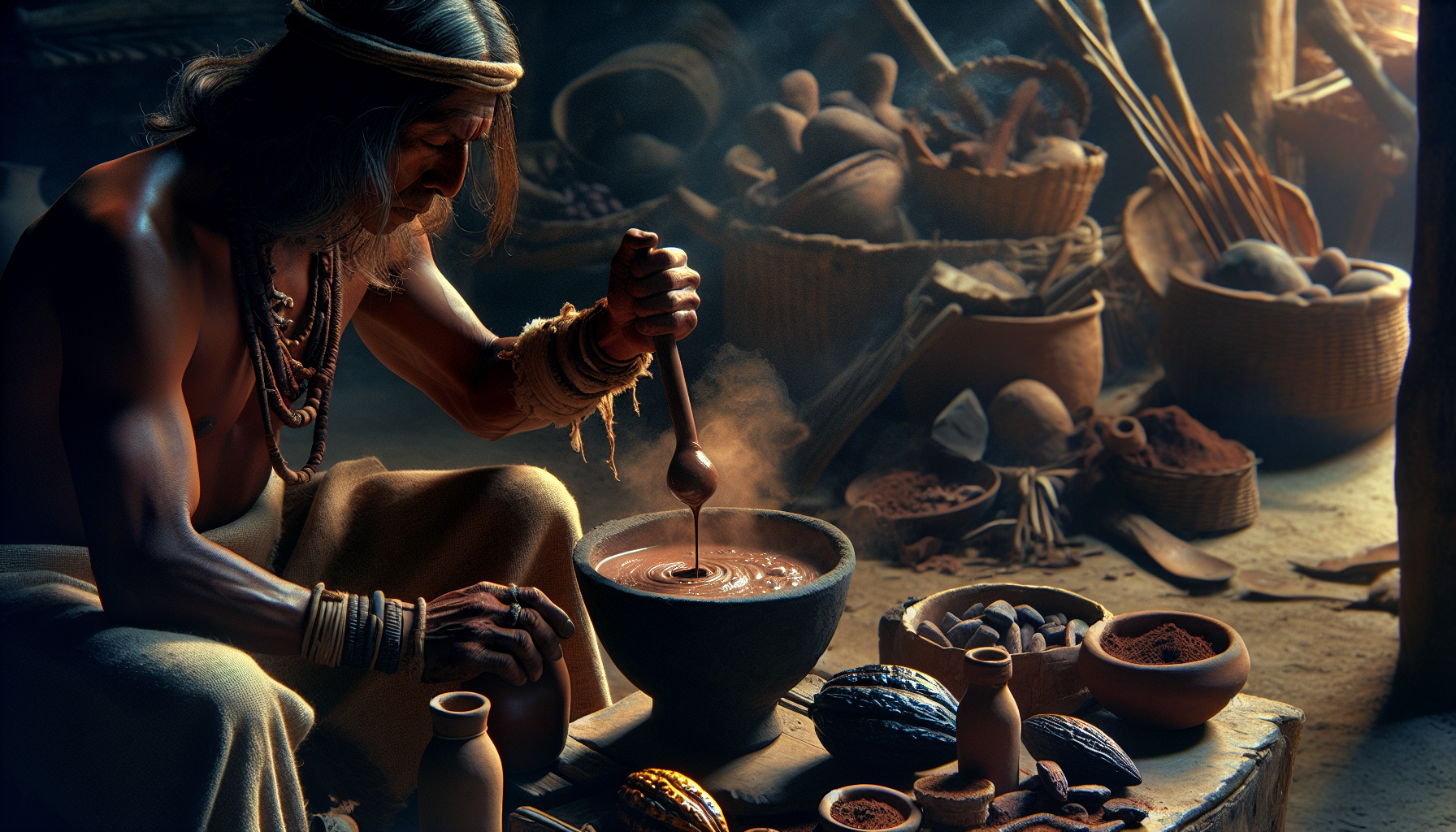
Conclusion
Indulging in the ancient art of Pre-Columbian chocolate frothing provides a fascinating window into the culinary and cultural practices of early Mesoamerican civilizations. Throughout this article, we’ve embarked on a journey that not only traced the historical and ritualistic significance of chocolate in these societies but also explored the intricate methods they used to prepare this revered beverage.
To recap, we began by understanding how chocolate, derived from the cacao bean, was more than just a consumable good; it was a symbol of wealth, power, and divine connection. The civilizations such as the Maya and Aztec revered chocolate, not only for its rich flavor but for its spiritual significance, integrating it deeply into their religious ceremonies and daily life. This historical perspective enriches our appreciation of chocolate beyond its modern-day confections and treats.
One of the most captivating aspects explored was the technique of chocolate frothing. The practice involved pouring the liquid from one vessel to another, creating a frothy and airy texture that was highly valued. This method was a testament to the skill and artistry of Pre-Columbian people, showcasing their ingenuity in maximizing the sensory experience of chocolate consumption.
We also delved into the social and economic dimensions of chocolate, revealing how it functioned as a form of currency and a means of establishing social connections and hierarchy. Such insights highlight the multifaceted role of chocolate, serving not only as a delightful beverage but also as a critical component of trade and social interaction.
Moreover, we discussed the ritualistic aspects of chocolate consumption, where it was often included in sacred ceremonies and offerings to deities. This practice underscores the profound respect and reverence that these cultures held for cacao, viewing it as a divine gift that bridged the earthly and the spiritual.
As we explored the sensory journey of tasting and preparing chocolate in its traditional form, we touched upon the contemporary revival of these ancient methods. There is a growing movement today to rediscover and preserve the traditional ways of preparing chocolate, offering a richer and more authentic experience that connects us to our historical roots.
This exploration encourages us to reflect on the broader implications of cultural preservation and the ways in which we can honor ancient traditions while integrating them into modern life. By understanding the history and significance of chocolate frothing, we not only gain insight into past civilizations but also enrich our current cultural practices.
In conclusion, the ancient art of Pre-Columbian chocolate frothing is more than a culinary technique; it is a vibrant tapestry woven from threads of history, culture, and ritual. As we indulge in the flavors and textures of this traditional practice, we are reminded of the enduring legacy of the civilizations that cherished chocolate as a sacred and treasured element of life.
I invite you, dear reader, to share your thoughts and experiences with us. Have you tried replicating this ancient method at home, or perhaps incorporated it into your own rituals and gatherings? Sharing these experiences can foster a community of enthusiasts eager to learn and preserve these timeless practices.
Furthermore, I encourage you to spread this knowledge and inspire others to explore the rich heritage of chocolate. Whether through a casual conversation, a shared post, or a cultural event, let us celebrate the artistry and history of chocolate frothing together. 🍫🌿
If you wish to delve deeper into the history and techniques of chocolate, I recommend exploring resources such as the World Cocoa Foundation and Chocolate Institute of America, which offer further insights into the cultural and economic impact of chocolate throughout history.
By embracing these ancient practices, we can keep the spirit and tradition of Pre-Columbian chocolate alive, fostering a deeper connection to the past while savoring the delightful flavors that continue to captivate us today.

